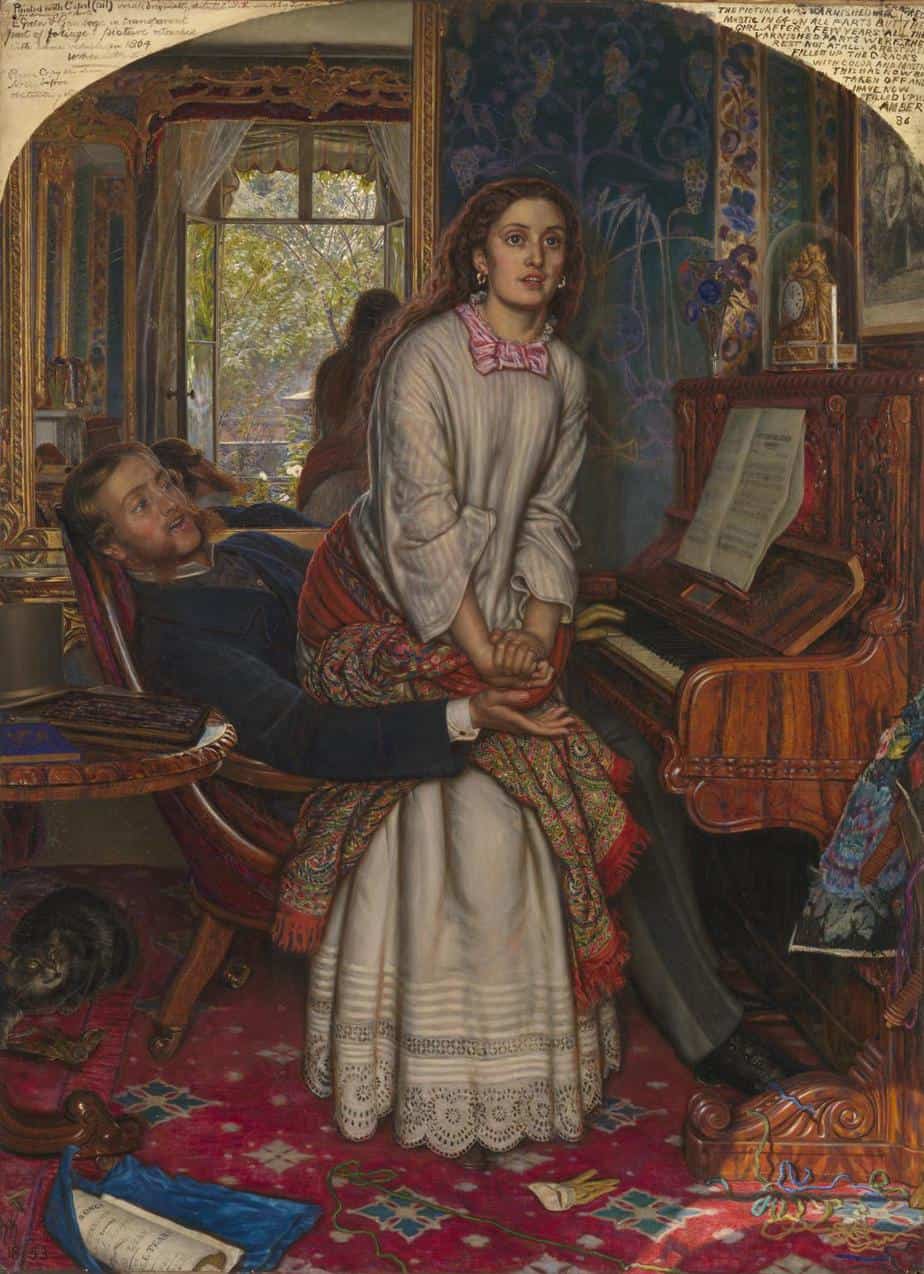According to Hayden White (American historian), The Redemption Story is one of the Four Grand Narratives of the West. (The others are Greek fatalism, bourgeois progressivism and Marxist utopianism.)
[R]edemption in particular is a popular, and particularly American, narrative. “Evolving from the Puritans to Ralph Waldo Emerson to Oprah Winfrey… Americans have sought to author their lives as redemptive tales of atonement, emancipation, recovery, self-fulfillment, and upward social mobility,” McAdams writes in an overview of life story research. “The stories speak of heroic individual protagonists—the chosen people—whose manifest destiny is to make a positive difference in a dangerous world, even when the world does not wish to be redeemed.”
The Redemption Story has a structure of its own. Specifically American in origin, the redemption plot is now evident across the globe. This is a story common to fiction and non-fiction alike.
In America especially they like a story in which you become triumphant or overcome a hurdle.
Yiyun Li, Chinese American writer
Christians like Holocaust narratives that feature redemptive arcs. They like “Schindler’s List” because it has a German hero. They like “Anne Frank” because of the famous “People are really good at heart” quote. They don’t like “Maus” because it resists that easy consolation.
@jh_swanson
The Bible might be sold as a short story collection subtitled ‘Stories of Redemption’. Inside we have standout examples such as:
- The Story of Noah
- Abraham and Isaac
- Ruth
- Potter
- Lost Sheep
- The Prodigal Son
- Saul of Tarsus
Jonah Lehrer (or was it?) writes that the Redemption Story is very powerful in American politics, also:
- Ben Franklin went from being a fugitive teen in Philadelphia to the founder of a nation
- President George W. Bush was “born again” after years of drinking and troublemaking
- John McCain was a prisoner of war
It applies to some of the best-loved American celebrities:
- Lehrer also mentions Oprah Winfrey, who had a troubled childhood
- Drew Barrymore was a child star who came through addiction
- Nicki Minaj grew up in a violent home in Queens
The redemption story is American optimism—things will get better!—and American exceptionalism—I can make things better!—and it’s in the water, in the air, and in our heads. This is actually a good thing a lot of the time. Studies have shown that finding a positive meaning in negative events is linked to a more complex sense of self and greater life satisfaction.
The opposite of a ‘redemption story’ is known as a ‘contamination story’. Contamination stories end on a tragic note.
The trouble comes when redemption isn’t possible. The redemptive American tale is one of privilege, and for those who can’t control their circumstances, and have little reason to believe things will get better, it can be an illogical and unattainable choice. There are things that happen to people that cannot be redeemed.

PROBLEMS WITH THE REDEMPTION STORY
Barbara Ehrenreich criticises this mindset throughout her book Smile Or Die.
It can be hard to share a story when it amounts to: “This happened, and it was terrible. The end.” In research McLean did, in which she asked people who’d had near-death experiences to tell their stories to others. “The people who told these unresolved stories had really negative responses,” she says. If there wasn’t some kind of uplifting, redemptive end to the story (beyond just the fact that they survived), “The listeners did not like that.”
Others say similar things.
Disrupting Breast Cancer Narratives: Stories of Rage and Repair
In this interview, Prof. Emilia Nielsen discusses the problem of the usual breast cancer narrative. She says that the happy stories of breast cancer survivors are so common that any other types of narrative almost require an apology. Emilia Nielsen is an assistant professor of arts, medicine and healing at York University’s Health & Society Program, Department of Social Science. She is the author of the scholarly text Disrupting Breast Cancer Narratives: Stories of Rage and Repair (University of Toronto Press, 2019) as well as two collections of poetry, Body Work and Surge Narrows.
New Books Network
Captain Awkward reserves special hatred for the redemption story, because the narrative has a far-reaching impact on real people. In this post, she explains Why We Don’t Diagnose People Through The Internet. At first glance this doesn’t seem to be related to The Redemption Story, but filling in the gaps, armchair diagnoses are terrible for a number of reasons. One of those reasons: It shifts focus from the victim back onto the abuser. If we assign a reason for an abuser’s abuse, that allows us to make another tiny little leap onto a redemption arc for that person.
We are addicted to redemption narratives.
We are especially addicted to stories where mean bad boys are reformed by the love and loyalty of a good lady who sees through their abuse to their true naked vulnerable heart and works really hard singlehandedly to keep the relationship going. Industries upon industries rise and fall on that one. But we like all kinds of redemption narratives and we like them a lot more than we like inconvenient ones where we have to think about victims, harm, or reparations.
Captain Awkward
Psychoanalytically, redemption is a form of binding. To redeem something is to bind something, to make it acceptable, to make it loveable, palatable, to make it somehow aesthetically acceptable.
Oliver Davis and Tim Dean, “Hatred of Sex” (U Nebraska Press, 2022) speaking at the Critical Theory podcast
THE TYPICAL STRUCTURE OF A REDEMPTION STORY
Dan McAdams, a psychologist at Northwestern University, wrote a book called George W. Bush and the redemptive dream: A psychological portrait. New York: Oxford University Press. McAdams specialises in the psychology of redemption. He also wrote The Art and Science of Personality Development, which includes a chapter called “Generative Lives, Redemptive Life Stories”.
Whether fiction or non-fiction, McAdams explains what a redemption story looks like:
- EARLY ADVANTAGE — the main character becomes aware of their special blessings; they feel marked from the start
- SENSITIVITY TO SUFFERING — the main character describes how they noticed the unfairness of the world
- MORAL STEADFASTNESS — the main character lives their life guided by a strong sense of right and wrong
- REDEMPTION SEQUENCES — moments in which a significant mistake or hardship — addiction, divorce, unemployment, etc. — becomes a means to absolution and grace, or what McAdams describes as the “deliverance from suffering to an enhanced status or state”
- EDUCATION PROVIDED BY THE HARD TIMES — the protagonist commits to “prosocial goals” and tries to “improve the lives of other people”
Here’s a Christian way of putting it. I’ve annotated with common writing terminology:
The Bible portrays the behaviour of mankind cyclically. [CIRCULAR PLOT SHAPE] From a high point of alignment with God’s character and will, man’s conduct deteriorates and sin increases. [PSYCHOLOGICAL AND MORAL WEAKNESS] Sin’s natural fruit is confusion, pain and suffering,[MAKE YOUR MAIN CHARACTER SUFFER HARD] and these grow as individuals and societies move farther from their Creator. As sin increases, harm increases. Eventually the pain reaches a point where people yearn for salvation. [BIG STRUGGLE] God raises up a man or woman, a deliverer, to lead the people back to Him; to help them realign with His will. [ANAGNORISIS] Through this deliverer, the Lord brings people back to Him. [NEW SITUATION] This is the Cycle of Redemption.
M.D. Harris

Let’s see how the structure of a redemption story lines up with the basic narrative structure suggested by storytelling experts.
- SHORTCOMING — in fiction, protagonists need something wrong with them at the beginning. The hero of a redemption story is more like a superhero in that they have special powers which cannot be realised due to external factors. There’s nothing necessarily wrong with them, personally.
- DESIRE — the hero in a redemption story starts to desire a different world because they have noticed injustice all around them.
- OPPONENT — the opponent is the society
- PROBLEM — mistakes and hardships — addiction, divorce, unemployment, etc.
- BIG STRUGGLE — I’m guessing that’s described, too. How hard it was to overcome such hardships.
- ANAGNORISIS — corresponds directly to the redemption sequences
- NEW SITUATION — ‘the protagonist commits to prosocial goals’
BELIEVE IN YOURSELF
One of the main messages to come out of America is: ‘Believe in yourself and you can do anything you set your mind to’. Many American children’s books express that message in the subtext.
Why are such stories so popular? Lehrer speculates that these redemption narratives ‘better prepare us for the “hard work and daunting challenges” of the well-lived life’.
To care for someone, or to agitate for social change, or to try to make a positive difference in the world, is to commit to a long struggle, a marathon in which success is mingled with failure and triumph is mixed up with disappointment. In order to not give up, it helps to have a life story in which pain is merely a precursor to wisdom, and every struggle an opportunity for growth.
EXPORTING THE DREAM
The Redemption Story can no longer be described specifically American. Dan Hade goes into the extent to which American stories have spread across the globe. The USA has been exporting its stories for several generations now, and it seems the most popular settingwide resembles some version of the redemption story.
Harry Potter is a British example. In Harry Potter and the Chamber of Secrets Harry feels unworthy of the House of Gryffindor. By the end of the story, Harry has all the proof he needs that he truly belongs in Gryffindor. Ron and Neville also learn to believe in themselves.
2017 update: Is it any wonder so many Hollywood movies are about terrible men seeking redemption? We’re continuing to see them, by the way. Maybe the post 2017 era will see fewer of them. One of the most egregious examples of 2017 is Godless. See this review for more on that, and save yourself the trouble of suffering through it.
THE OPPOSITE OF A REDEMPTION STORY: THE DAMNATION ARC
It’s worth pointing out that America has also produced some tentpole anti-redemption stories, probably in reaction to the popularity of its inverse.
- Deliverance is one example, a film based on a novel by James Dickey.
- Hud is another, written by Larry McMurtry. McMurtry’s general outlook on life is a pessimistic one — Lonesome Dove (which he wrote later) is often described as a great Western when it is in fact a typical anti-Western.
- Perhaps the inverse of a redemption story is a revenge story, in which case True Grit is a good example.
- Breaking Bad went against the grain and created a character (Walter White) who started off supposedly okay, then got worse and worse until he was dead. Audiences weren’t meant to like or approve of him. But many had trouble withdrawing their approval, instead focusing their distaste on Skyler, his wife. I suspect that portion of the audience had become so conditioned to expect a redemption story that it affected their reading of a subversion.
Annalee Newitz talks with Charlie Jane Anders about the importance of damnation arcs in storytelling:
This is why I think damnation arcs are such an important storytelling device. Because at their best … they allow us to see how socially destructive people and events don’t come out of nowhere. They build over time. And I suspect one of the reasons why we don’t often talk about damnation arcs as such is because many of us don’t want to think about that process. It’s just much easier to believe that people magically convert into bad guys than to consider the way that people are turned into bad guys. Because actually, horrible things happened to them.
Our Opinions Are Correct podcast

FOR FURTHER INVESTIGATION
[T]here is very little evidence that [job seeking] policies actually work – pressurising jobseekers in an economy short of work hardly creates more jobs. How can their popularity be explained? Often the explanation is found in the ideological dismantling of the welfare state – exemplified by academics Murray and Mead in the USA, implemented in the UK by David Cameron and Iain Duncan Smith, but also Blair and Browne before them. From right to left, from the Anglosphere across the EU, the idea of transforming the unemployed into workers through punitive threats has an extraordinary grip on the imagination of politicians and policymakers.
While there are many factors, the persistence of religious ideas of redemption are central here – from the JobCentre to management literature.
Working on Ourselves: Jobseeking as a Quest for Redemption
Tom Boland and Ray Griffin
1st June 2021
Negative depictions of trans people in the media forced Meghan even further into the closet, which severely affected her mental health, and saw her try to take her own life at the ages of eight and 15.
She “fell into Evangelical purity culture”, which she was attracted to because of “the constant references to healing, regeneration, renewal, and rebirth”.
Pink News
Episode 55 of the Then Again Podcast: The Origins of American Exceptionalism with historian Dr. Anne Tucker. “Historian and professor Dr. Anne Tucker joins Glen in a discussion about the origins of American Exceptionalism — just how exceptional are the ideas that founded the United States? Dr. Tucker brings her vast knowledge of the American South and international perspectives of American history in this fascinating episode!”

